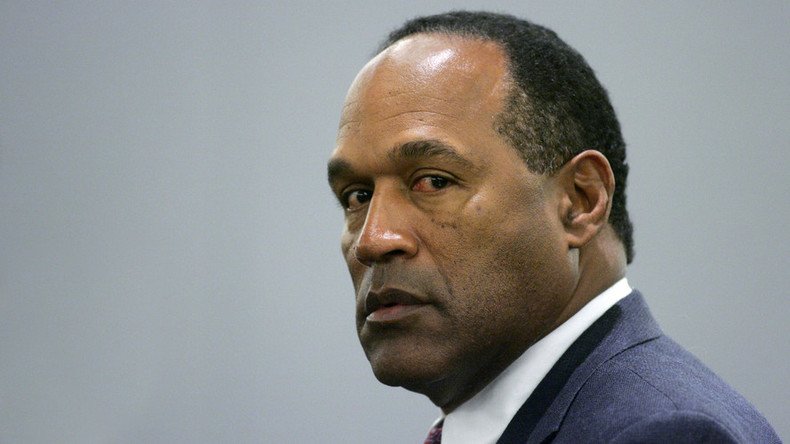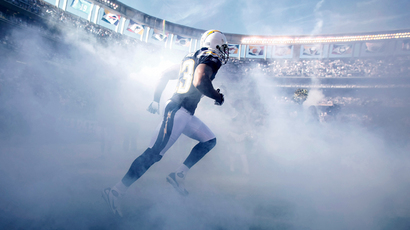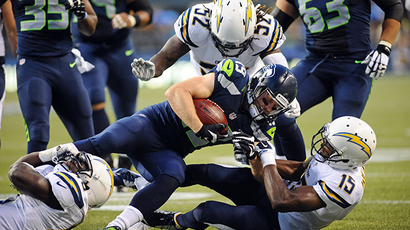O.J. Simpson is prime candidate for degenerative brain disease, says famed concussion doctor

Dr. Bennet Omalu, who first discovered the head-trauma condition associated with NFL players, says he is almost certain that former football star O.J. Simpson has the brain disease.
Omalu, who was portrayed by actor Will Smith in the recent film Concussion about his discovery of chronic traumatic encephalopathy (CTE), said that Simpson's 11 years in the National Football League and two record-breaking seasons at the University of Southern California may have triggered CTE.
Simpson, a Pro Football Hall of Famer, is currently serving time for armed robbery and kidnapping in a Nevada prison.
"I would bet my medical license that he has CTE," Omalu told People magazine. "Given his profile, I think it's not an irresponsible conclusion to suspect he has CTE."
OJ Simpson's pal tells me what the Juice's life is like now - and it don't sound too pretty. https://t.co/Z04TZiJpNYpic.twitter.com/xgG1xp34GX
— Johnny Dodd (@Johnny_Dodd) January 29, 2016CTE is marked by "memory loss, confusion, impaired judgment, impulse control problems, aggression, depression, and, eventually, progressive dementia," according to Boston University's CTE Center. The disease can manifest years or decades after the head trauma occurs. A conclusive diagnosis for CTE can only be established upon death, after cross sections of an individual's brain are tested.
During his playing days, Simpson routinely required custom-made helmets given the uniquely large size of his head, contributing to the potential risks of ending up with the degenerative condition.
"If you have a bigger head that means your head is heavier," Omalu said. "That means the momentum of your impact would be bigger. It's basic physics."
I don't want to hear anything about CTE regarding OJ Simpson. It was JEALOUSY & ENVY! OJ did it!!! pic.twitter.com/EXmMMK5XXM
— Stephen A Smith (@stephenasmith) January 29, 2016Simpson nearly attempted to use his potential for CTE as a legal defense, pleading for a re-trial over his 2008 conviction for armed robbery in Las Vegas.
In 2012, Simpson's defense reportedly filed a sworn statement that pointed out a history of concussion-induced brain damage. The filing said Simpson suffered "numerous blows to my head and/or landed on my head violently" during his playing career.
"I was knocked out of games for such head blows repeatedly in the 1970s and other times I continued playing despite hard blows to my head during football games," the document reportedly said.
Will Smith takes on hard-hitting issue; tackles the #NFL in his new movie, Concussion. https://t.co/ztTaFhTkrUpic.twitter.com/Ztk4dq54Wd
— RT America (@RT_America) November 12, 2015Simpson's attorneys ultimately left the head-trauma strategy behind, and the former football star blamed his lawyer for squandering the case.
"Everybody who knows him knows there's a problem there," his former business manager Norman Pardo told People. "There's something wrong with his head and there has been for a long time."
In 1995, Simpson was found not guilty for the murder of his ex-wife, Nicole Brown Simpson, and her friend Ronald Goldman. Exactly thirteen years later, he was convicted for armed robbery and kidnapping and sentenced to 33 years in prison. He will be up for parole next year.
Fact or fiction? Victims' families speak out ahead of OJ Simpson miniseries: https://t.co/vkcBpGuwhspic.twitter.com/veKLm8gRJM
— TODAY (@TODAYshow) January 29, 2016Omalu discovered CTE in football players after examining former Pittsburgh Steeler Mike Webster's brain. He found that repeated blows to the head cause long-term brain damage in players. He fought the NFL to release this information to the public, eventually getting the league to acknowledge the link between CTE and football in 2009.
Researchers at the US Department of Veterans Affairs’ brain repository released a study in 2014 that found 96.2 percent of deceased pro football players had CTE.
A class action lawsuit, in which thousands of former NFL players sued the league over accusations that it hid the risks of concussions from players for decades, was settled for more than $700 million in 2013.














